Potential Cosmetic Applications of the Combined Extract of Panax ginseng, Ganoderma lucidum, Cordyceps militaris, and Several Asian Plants
- PMID: 40762221
- PMCID: PMC12322945
- DOI: 10.1111/jocd.70343
Potential Cosmetic Applications of the Combined Extract of Panax ginseng, Ganoderma lucidum, Cordyceps militaris, and Several Asian Plants
Abstract
Objective: Although bioactive compounds from single herbs are extensively explored in cosmetics, the synergistic potential of herbal combinations remains understudied. This study aimed to evaluate the stability of a combined extract of Panax ginseng, Ganoderma lucidum, Cordyceps militaris, and several Asian plants (PGC), and its multifunctional efficacy for acne-related skin dysfunction.
Methods: PGC was analyzed using high-performance liquid chromatography (HPLC) for batch consistency and bioactive quantification. Network pharmacology and molecular docking were used to identify active components and targets and assess binding affinities, respectively. In vitro assays were conducted to evaluate antibacterial activity, skin barrier repair, keratinocyte migration, reactive oxygen species (ROS) reduction, anti-inflammatory effects, and inhibition of lipid accumulation. The safety was tested via cytotoxicity assessments.
Results: HPLC analysis validated batch consistency and identified key bioactive constituents in PGC, including phenolic acids, flavonoids, and alkaloids. Integrated network pharmacology and molecular docking revealed multitarget mechanisms through the regulation of the IL-17/TNF/NF-κB axis pathway modulation. PGC exhibited potent antibacterial efficacy against acne-associated pathogens (Cutibacterium acne, MIC = 25 μg/mL), restored skin barrier integrity (filaggrin, +235%; loricrin, +261%), and sodium dodecyl sulfate (SDS)-induced damage (85%). Concurrently, PGC accelerated keratinocyte migration (40%), reduced ROS (45%) and abnormal lipid droplet content (60%), and attenuated inflammatory responses (40% nitric oxide (NO) inhibition) while maintaining biosafety (no cytotoxicity ≤ 200 μg/mL).
Conclusion: PGC exemplified the translational potential of herbal compatibility, offering a multitargets solution for acne management through integrating antibacterial, barrier-repair, anti-inflammatory actions, and several other effects. This study established a network pharmacology-guided framework for developing evidence-based multitargets cosmetics.
Keywords: cell culture; computer modeling; cosmetic formulation; herbal synergy; multitargets efficacy; skin barrier.
© 2025 The Author(s). Journal of Cosmetic Dermatology published by Wiley Periodicals LLC.
Conflict of interest statement
All authors, except Ronghua Liu, were employed by Lasur Cosmetics Co. Ltd. The authors declare that the research was conducted without any commercial or financial relationships that could be perceived as potential conflicts of interest. They agree to submit the manuscript to “
Figures





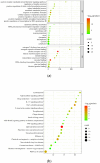
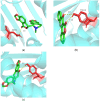
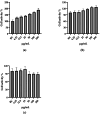
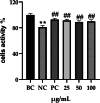

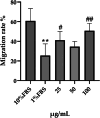
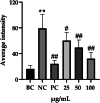

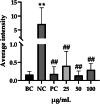
Similar articles
-
Unveiling the ethnomedicinal potential of Alchemilla speciosa Buser: An underexplored source of bioactive compounds for skin health.J Ethnopharmacol. 2025 Jul 24;351:120068. doi: 10.1016/j.jep.2025.120068. Epub 2025 May 30. J Ethnopharmacol. 2025. PMID: 40451493
-
Identification of Protocatechuic acid as an anti-acne component in extracts of black rice bran.Sci Rep. 2025 Jul 1;15(1):21151. doi: 10.1038/s41598-025-07396-6. Sci Rep. 2025. PMID: 40595175 Free PMC article.
-
The mechanism of action in Mussaenda pubescens (Yuye Jinhua) against influenza A virus: Evidence from in vitro and in vivo studies.Phytomedicine. 2025 Sep;145:157070. doi: 10.1016/j.phymed.2025.157070. Epub 2025 Jul 13. Phytomedicine. 2025. PMID: 40684492
-
Ganoderma lucidum (Reishi mushroom) for cancer treatment.Cochrane Database Syst Rev. 2012 Jun 13;(6):CD007731. doi: 10.1002/14651858.CD007731.pub2. Cochrane Database Syst Rev. 2012. Update in: Cochrane Database Syst Rev. 2016 Apr 05;4:CD007731. doi: 10.1002/14651858.CD007731.pub3. PMID: 22696372 Updated.
-
Ganoderma lucidum (Reishi mushroom) for cancer treatment.Cochrane Database Syst Rev. 2016 Apr 5;4(4):CD007731. doi: 10.1002/14651858.CD007731.pub3. Cochrane Database Syst Rev. 2016. PMID: 27045603 Free PMC article.
References
-
- Hay R. J., Johns N. E., Williams H. C., et al., “The Global Burden of Skin Disease in 2010: An Analysis of the Prevalence and Impact of Skin Conditions,” Journal of Investigative Dermatology 134 (2014): 1527–1534. - PubMed
-
- Franik G., Bizoń A., Włoch S., Kowalczyk K., Biernacka‐Bartnik A., and Madej P., “Hormonal and Metabolic Aspects of Acne Vulgaris in Women With Polycystic Ovary Syndrome,” European Review for Medical and Pharmacological Sciences 22 (2018): 4411. - PubMed
-
- Harris V. R. and Cooper A. J., “Modern Management of Acne,” Medical Journal of Australia 206 (2017): 41–45. - PubMed
-
- Tsai H., Lee W., Wang P., Cheng K., Chen Y., and Shen S., “ Propionibacterium acnes‐Induced iNOS and COX‐2 Protein Expression via ROS‐Dependent NF‐κB and AP‐1 Activation in Macrophages,” Journal of Dermatological Science 69 (2013): 122–131. - PubMed
MeSH terms
Substances
LinkOut - more resources
Full Text Sources
Medical

